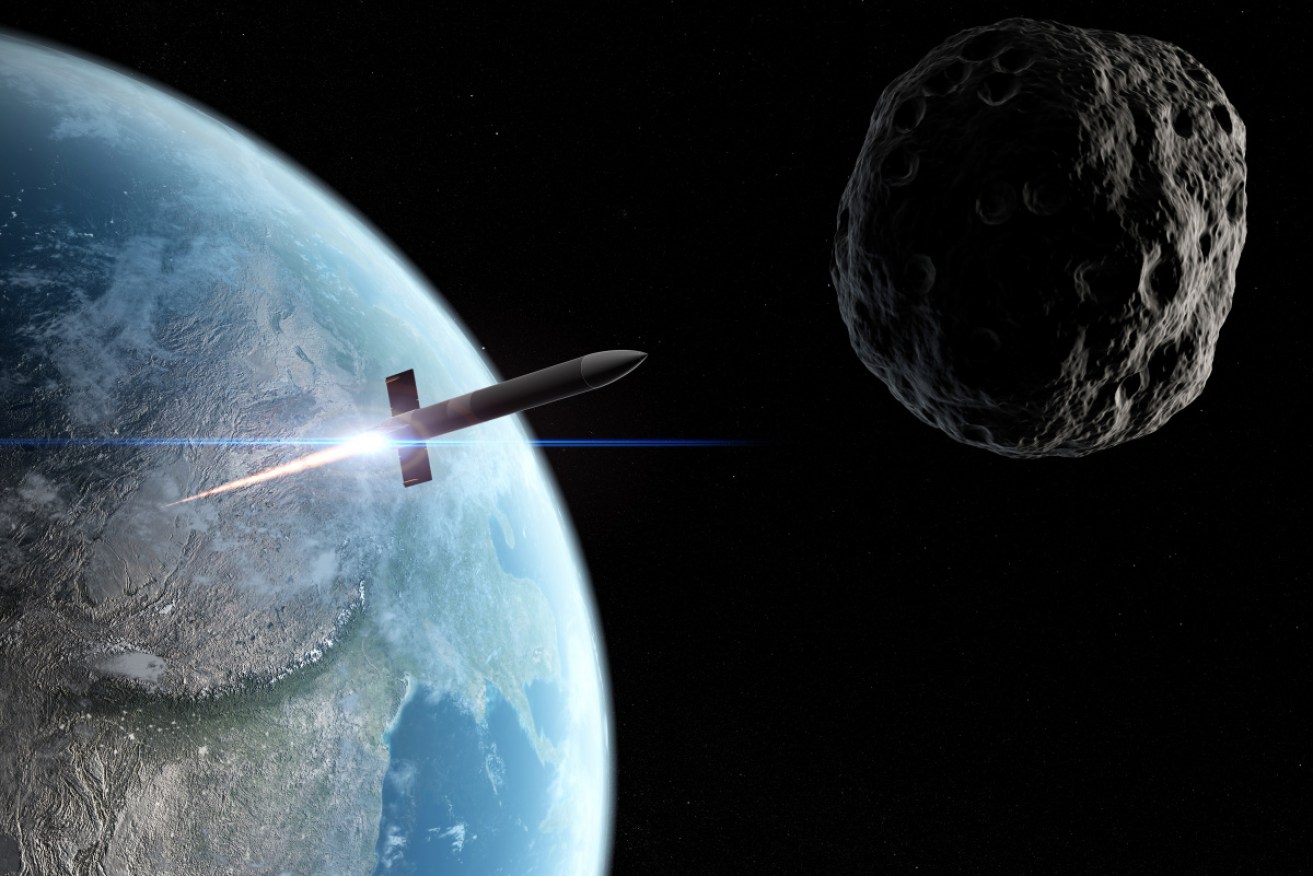NASA sacrificing spacecraft to knock asteroid off course


NASA is carrying out an Earth defence test on an asteroid 11 million kilometres away. Image: Getty
Not all eyes will be on the US Presidential election next year – some will be looking higher up, when NASA, for the first time, launches a mission to knock an asteroid off course.
It’s been done in the movies – Bruce Willis, stand down! – and now it’s happening for real.
The DART spacecraft is due for launch between December 2020 and May 2021.
From the movies to reality
It will meet up with the Didymos binary system – a large asteroid, Didymos, with a moonlet nicknamed Didymoon. At that time, Didymos will be about 11 million kilometres from Earth.
Didymoon is the actual target. NASA says this is because the moonlet has150-meter diameter “which is more typical of the size of asteroids that could pose a more common hazard to Earth”.
In October 2022, the DART spacecraft will crash dead centre on to the face of Didymoon.
The European Space Agency (ESA) was meant to send a spacecraft in tandem, to survey Didymoon and to measure the impact – but funding has cut the ESA’s involvement back three to four years. The up-close data collection will have to wait.
Even so, the ESA is excitedly describing the mission as “Humankind’s first planetary defence test”.

The DART crashing into Didymoon: the world’s first planet defence mission. Image: ESA
And just in time. Last year offered a series of warnings that our asteroid-readiness needed a prod.
In March last year, NASA said it was preparing for the small but significant chance that an asteroid named Bennu – the size of the Empire State Building – will smash into Earth and wipe out a good portion of life.
NASA needs all the notice it can get
This will occur on September 22, 2135, which, yes, is some time off. But NASA has said it needs at least 10 years notice to fully prepare for an asteroid strike – mainly so they can meet it many miles away from Earth.
In December, after more than two years and two billion kilometres, NASA’s OSIRIS-REx spacecraft arrived at Bennu to assess if it could be mined – or eventually knocked off course or blown up.
NASA said the blowing-up would be done by a nuclear super-ship under the supervision of the Hypervelocity Asteroid Mitigation Mission for Emergency Response. Or HAMMER. So that’s maybe what happens with plenty of notice. Or maybe someone’s just kidding us.

All those components of the DART spacecraft are important, until the moment of impact and the whole thing goes up in flames. Image: NASA
But consider this: on April 14, the Catalina Sky Survey discovered Asteroid 2018 GE3 – said to be five times the size of the Chelyabinsk meteor that violently boomed the skies above Russia in 2013, and blew out windows and injured more than a thousand people, causing them to be thrown around, as in an earthquake, or daggered by falling glass.
Hours after first being spotted – virtually without notice – Asteroid 2018 GE3 zipped past the Earth at about half the distance between us and the moon. Or about 192,000 kilometres. It was one of the biggest objects encountered at the relatively short distance on record.
Then in May, astronomers with the Harvard-Smithsonian Center for Astrophysics – in a survey of more than 17,000 near-Earth objects identified between 2013 and 2016 – lost track of 900 near-Earth asteroids after seeing them for the first time.
As space.com noted: “Keeping track of these bodies is also difficult, due to their size and low reflectivity – as well as limited telescope time.”
So sometimes there isn’t 10 hours notice, let alone 10 years.
Trump boosts Earth defence funding
In June, the Trump administration announced the “National near-Earth object preparedness strategy and action plan” – and a boost of funding for earth defence from $US12 million ($17 million) to $US150 million ($211 million).
NASA has devised three strategies to prevent a lethal asteroid strike:
- Kinetic impact: A direct hit with a spacecraft to nudge it off course. Would require the asteroid to be millions of kilometres away from Earth to allow the trajectory to be wide enough of our planet. This is what’s being tested with the DART spacecraft
- Gravity tractor: By attaching a spacecraft to an asteroid, the enlarged mass would naturally take a different path
- Nukes followed by a rocket push: A nuclear explosion on a massive asteroid would melt off some of the mass. A rocket could then theoretically push the asteroid to a different trajectory. For the scientists say they’d definitely need at least a decade’s notice








